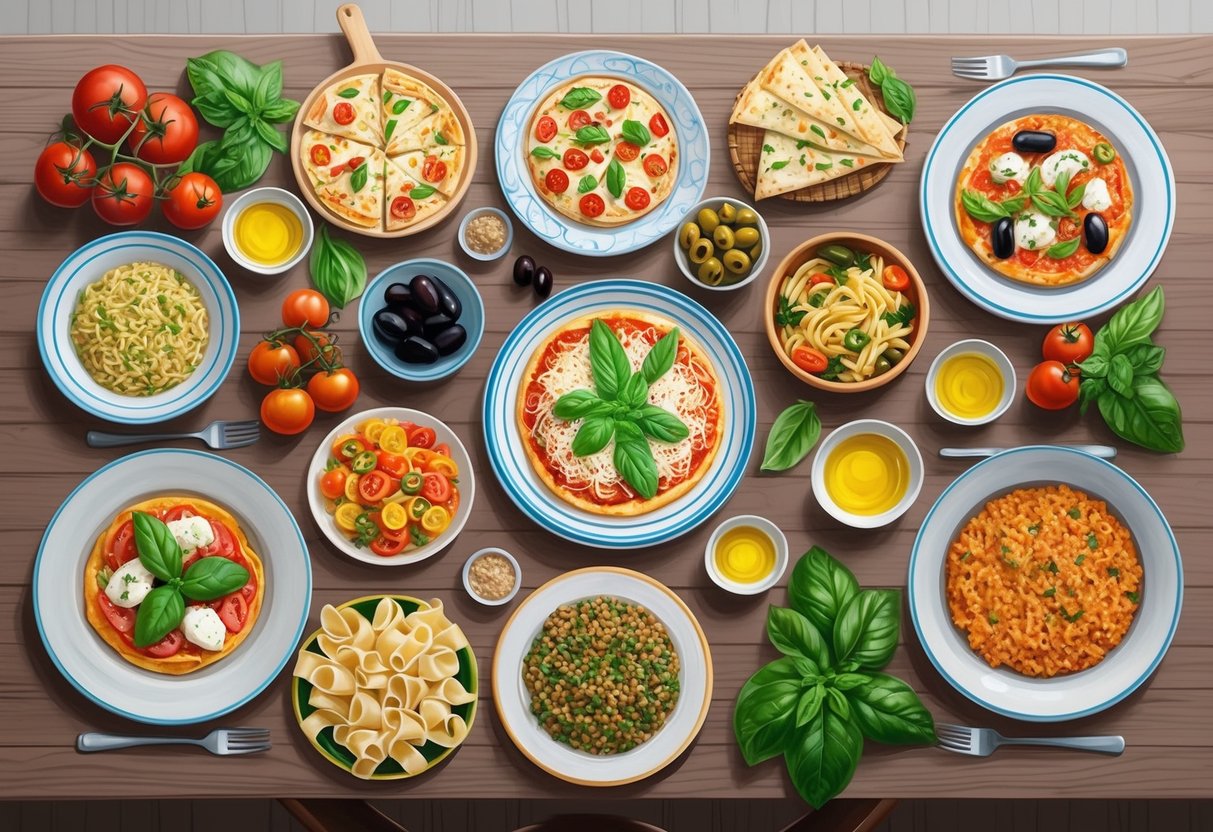
Celebrated Pizza Traditions
Italy’s pizza culture represents regional pride, time-honored craftsmanship, and fresh, high-quality ingredients.
From wood-fired ovens to regional toppings, classic Italian pizzas offer a blend of simplicity and tradition that continues to shape global culinary expectations.
Neapolitan Pizza
Neapolitan pizza, originating in Naples, is recognized as the gold standard of Italian pizza styles.
Its defining characteristics include a soft, chewy crust with a slight char, blistered edges, and a tender center.
This pizza is baked at very high temperatures—typically in a wood-fired oven—which imparts a unique texture and flavor.
The traditional recipe uses a handful of carefully selected ingredients.
Authentic versions typically feature San Marzano tomatoes, grown in the volcanic soil of Campania, and buffalo mozzarella or fior di latte.
Fresh basil, extra virgin olive oil, and a light scattering of salt complete the classic Pizza Margherita.
To achieve true Neapolitan status, each pizza must meet strict guidelines, including dough preparation, ingredient sourcing, and baking technique.
Imported globally, Neapolitan pizza now enjoys protected status and remains a symbol of Italy’s refined yet unpretentious approach to food.
Regional Pizza Specialties
Italian pizza is far from uniform, with regions developing distinct specialties based on local tastes and ingredients.
Rome is famous for its thin, crisp-crusted pizza, often sold by the slice (pizza al taglio).
The Roman style uses simple toppings like tomatoes, anchovies, and artichokes, cut into squares for casual eating.
In Sicily, sfincione is a popular variant with a thick, spongy base, robust tomato sauce, onions, anchovies, and breadcrumbs.
The pizza alla pala of central Italy is shaped in long ovals and baked directly on the oven floor.
Other unique styles include focaccia di Recco from Liguria—a cheese-filled, unleavened bread—and pizza bianca, which skips tomato sauce altogether.
These regional pizza styles showcase the country’s diverse culinary heritage, ensuring every region of Italy can claim a signature flavor.
Perfect Pizza Dough
The dough forms the backbone of every great Italian pizza.
Proper dough starts with just four ingredients: flour, water, salt, and yeast.
Mastery of the dough process is crucial—resting, kneading, and fermentation develop the texture and flavor crucial for both Neapolitan and regional styles.
Neapolitan pizza dough is traditionally made with Italian “00” flour for elasticity and a light, airy texture.
The fermentation process, usually lasting 24 to 48 hours, allows the dough to develop depth without excessive chewiness.
For Roman pizza, drier doughs are rolled thinner to create a crisp base that holds up well to toppings.
Baking methods vary, but stone or brick ovens are common for achieving ideal crust texture—soft in the center and crisp at the edges.
Reliable recipes and tips for authentic pizza dough can help home cooks approach Italian standards, whether recreating a Neapolitan classic or exploring regional favorites.
Regional Italian Food Specialties
Italian cuisine is deeply rooted in its regions, each offering unique dishes shaped by local ingredients and culinary traditions.
Distinct flavors, methods, and preparations create a diverse food landscape across Italy.
Northern Italian Classics
Northern Italy features hearty meals driven by rich dairy and grain products.
Risotto, especially the famous Risotto alla Milanese, is popular in Milan, known for its creamy saffron flavor.
In Emilia-Romagna, Bologna stands out for Lasagna alla Bolognese, combining layers of pasta, ragù, and béchamel sauce.
Liguria brings lighter options such as pesto alla genovese, a basil-based sauce originally from Genoa, most commonly served with trofie or trenette pasta.
Polenta is another staple, especially in the Alpine regions, often paired with stews or melted cheeses.
Cheese lovers will appreciate Parmigiano Reggiano, produced in Emilia-Romagna, and Grana Padano.
Cured meats like prosciutto di Parma and mortadella are common on appetizer boards throughout the north.
More on these regional specialties can be found in this guide to classic Italian foods.
Central Italian Favorites
Central Italy showcases robust flavors and a strong focus on simple yet high-quality ingredients.
Tuscany is renowned for its bistecca alla fiorentina: a thick, grilled steak prepared simply with olive oil, salt, and pepper.
Ribollita, a Tuscan bread and vegetable soup, highlights the region’s peasant roots.
Rome, located in Lazio, is home to famous pasta classics.
Cacio e pepe, carbonara, and amatriciana use minimal ingredients like pecorino cheese, black pepper, eggs, and cured pork, but deliver intense flavor.
Porchetta, slow-roasted, herb-stuffed pork, appears at markets and festivals across central Italy.
Umbria and Le Marche add truffles, lentils, and wild game to regional menus.
Central Italian breads like saltless pane toscano are often served alongside salumi and cheeses.
Southern and Island Specialties
Southern Italy’s cuisine is marked by sun-ripened vegetables, olive oil, and robust spices.
Naples is the birthplace of pizza Margherita, made with tomato, mozzarella, and fresh basil.
Sicily offers arancini – fried rice balls with meat or cheese fillings, and caponata, a sweet-and-sour eggplant dish.
Sardinia features unique specialties like porceddu, a slow-roasted suckling pig, and pane carasau, a crisp flatbread traditionally served with cheese and cured meats.
Calabria contributes spicy ’nduja sausage and various chili-infused recipes to the southern table.
Seafood is prominent, especially in coastal areas and islands, featuring dishes such as swordfish, sardines, and octopus.
The south also offers iconic sweets, including Sicilian cannoli and Neapolitan sfogliatella.
Visit this overview of Italian regional cuisine for more examples of culinary diversity.



